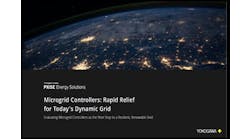Murkowski Introduces Remote Microgrid Bill in the Senate; Angus Pushes Local Energy
U.S. Sen. Lisa Murkowski has championed use of remote microgrids in her own state of Alaska. And now she wants their value brought to the nation.
The Republican recently introduced a bill into the Senate that instructs the Secretary of Energy to create a national strategy to promote hybrid microgrids, including renewables, for isolated communities.
As chairman of the Committee on Energy and Natural Resources, Murkowski is a powerful ally for microgrids.
S.1227 is expected to be rolled into a larger energy bill with a strong electric power focus that has been the subject of hearings before the committee in recent months.
The microgrid piece, coupled with distributed energy legislation introduced by Maine’s Sen. Angus King, signals that local energy may get a federal push this session.
Angus’ bill, the Free Market Energy Act of 2015, would protect consumer interconnection rights and also create a rate design for utilities that reflects the new way of doing business on a more distributed grid. The bill also calls for a central distributed grid operator along the lines of New York’s distributed system platform provider. Angus’ bill would set overall parameters, but leave it up to the states to work out details.
The support of local energy by Angus, an Independent, and Murkowski a Republican, suggests that interest in microgrids crosses political lines and is not confined to the Democrats who frequently champion clean energy.
During a hearing in March, Murkowski described the benefits remote microgrids have brought to Alaska, which has more microgrids than any other U.S. state, according to Navigant Research.
And in a speech last fall to the Council of Arctic Parliamentarians, Murkowski praised microgrid development in her state, pointing out that it has 200 remote microgrids and 15 percent of the world’s renewable microgrids.
Here is an excerpt from Murkowski’s speech that sheds light on her reasons for pushing microgrids.
Microgrids — I’ve been talking a lot about microgrids the past couple of days here because [in] many parts of the Arctic — that’s what you have. You are just not connected to any kind of a grid. We have in the state of Alaska, over 200 small, permanently islanded microgrids, and these range from anywhere from generating 30 kW— to as much as 10 MW. We have, in our state, 15 percent of the world’s microgrids that are powered by renewable energy.
I’ll give you a couple examples.
I was in the community of Cordova on Sunday. Cordova has small hydro, but what they have done in order to meet the demand for local fish processing in the summertime. They have used their ingenuity to figure out how to engineer waste heat recovery, they have added some biofuels technology…The nearest big hardware store is 500 miles away and no road to get there. So they’re working to piece it together.
The community of Kodiak, an island community, is almost 100 percent energy independent in the sense that they are producing all of their power needs through renewable energy sources; through hydro that they have coming down the mountain, they have three wind turbines situated above the community; they have a battery system that they have integrated, and they’re working to sort of even-out some of the highs and the lows through fly-wheel technologies.
But [they’re doing this] not because there’s been some — some mandate; it’s because they can’t afford to operate on their own based on the diesel generation that they have historically relied on…It’s utilizing this human capacity we have, to piece together ways that we can be more independent. So, I look at this river behind me and I know that as you go towards the Bering Sea, you pass [a] marine hydrokinetic project. I look at how they’re integrating it into their systems and I’m saying: these are opportunities for us. These are opportunities and we can pioneer them in the Arctic.
Interested in remote microgrids? Join the discussion on our new LinkedIn Group, Community Microgrids and Local Energy.






